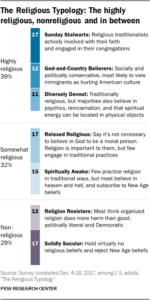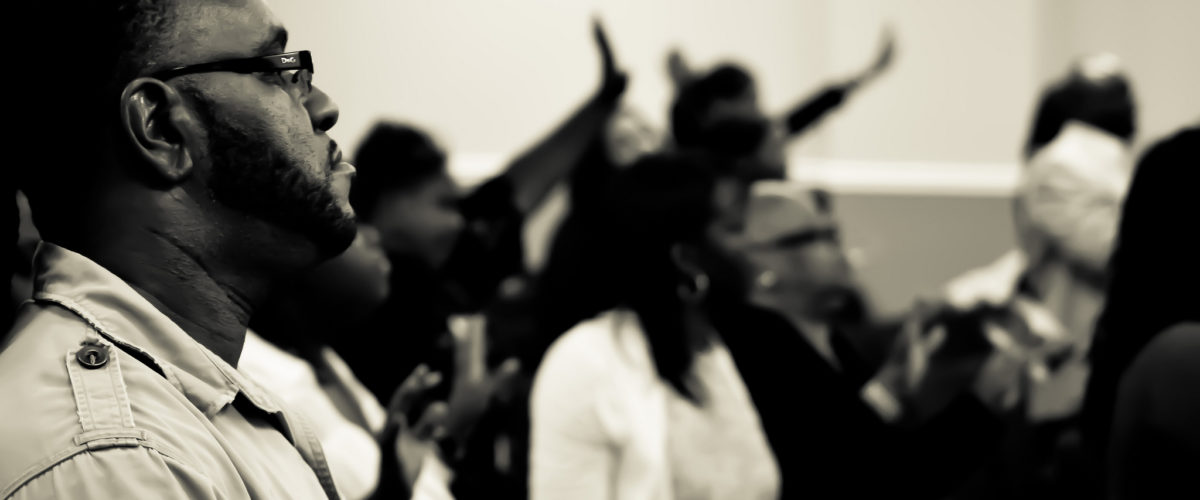Religion in the U.S. is morphing so fast that observers often are at a loss for words to describe it.

Terms like “nones” and “dones,” unheard of just a few years ago, are now commonly used by universities, seminaries and churches.
Seeing such trends continue, the Pew Research Center has unveiled new categories for describing faith, and the lack of it, in America. Their newly released study seeks to create fresh perspectives on traditional understandings of religion.
The project is titled “The Religious Typology: A new way to categorize Americans by religion.”
In it, Pew researchers ask new questions to uncover previously unseen attitudes and practices that connect Americans across traditional religious groups.
Pew even created an online quiz to help individuals determine their religious type.
“This was an exercise to get a fresh look at things,” said Becka Alper, a research associate and one of the primary researchers on the typology project.
“This analysis shows us that when you reshuffle the deck in this way, you can see that Americans have a lot in common with people of other religious affiliations,” Alper told Baptist News Global.
So, instead of identifying U.S. adults by what denomination or religious tradition they belong to – or as agnostics or atheists or “nones” – the new Pew study identifies seven new categories that group people by behaviors and beliefs.
Pew identified:
- Sunday Stalwarts as the most religious group of Americans. They actively practice their faith and are heavily involved in congregations.
- God-and-Country Believers. They are less active in faith-based institutions but, like the stalwarts, adhere to traditional beliefs and are more likely to be conservative on social and political issues.
- The Diversely Devout, who are diverse in belief and demographics and who express belief in both the God “described in the Bible” but also in “physics, reincarnation and spiritual energy located in physical things.”
- The Solidly Secular. They occupy the other end of the spectrum and are the least religious of all the categories. Largely affluent, highly educated and mostly white males, this group usually describes itself as neither spiritual nor religious. They tend to reject biblical and New Age beliefs alike.
- Religion Resisters, who often hold negative views of organized faith, believe churches are too influential in politics and see religion as more harmful than good. Generally liberal and Democratic leaning, they also hold beliefs “in some higher power or spiritual force (but not the God of the Bible)” and may embrace New Age concepts. They are likely to describe themselves as spiritual but not religious.
- The Relaxed Religious. This group believes in the biblical concept of God and many of them pray daily. However, few of them attend services or read scripture. They are likely to hold that belief in God isn’t necessary to be a moral person.
- The Spiritually Awake, who hold some New Age views and many of whom do not believe in the biblical concept of God. Few attend religious services on a weekly basis.
In its summary of the research, Pew said traditional categories were not omitted from consideration in the study. On the contrary, viewing religious affiliation through the lens of the new typology is most revealing, Alper said.
One fact uncovered is that in none of the new types is the membership religiously uniform.
“This shows that members of widely disparate religious traditions sometimes have a lot in common: Sunday Stalwarts, for instance, are largely Protestant, but also include Catholics, Mormons, Jehovah’s Witnesses, Jews, Muslims, Hindus and others.”
Also notable is that the “somewhat religious groups” are made up mostly of Christians, Pew said. The Relaxed Religious category is composed of more evangelicals than the Spiritually Awake, which has more “nones” than the previous group.
Pew researchers experimented with as few as five and as many as eight new types in preparing the report, Alper said. It was found that seven yielded the most meaningful results.
The cluster analysis used for the study teases out new perspectives on traditional concepts.
“This shows that there is a lot of commonality between groups that would be hard to see otherwise,” Alper said.


